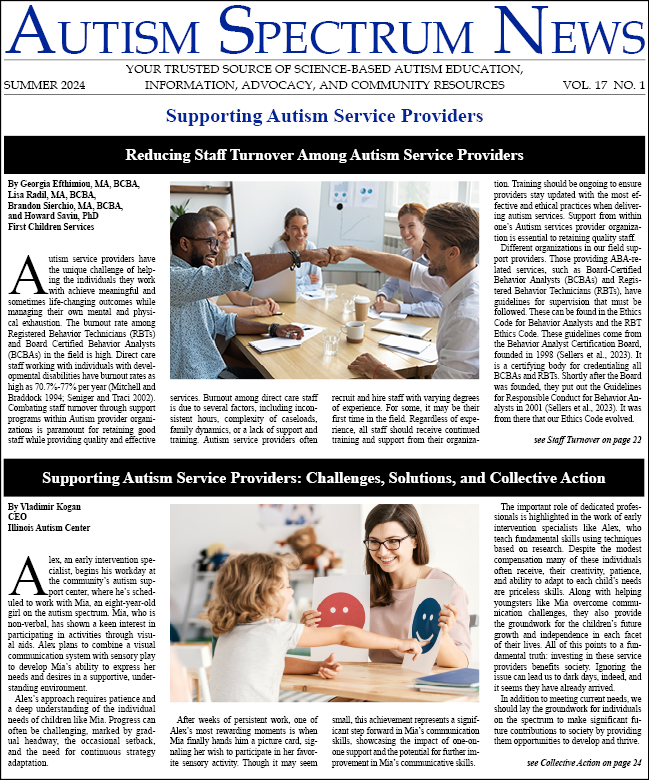-
The Increasing Popularity of Telehealth Services for Autism Spectrum Disorders
Children and young adults with autism spectrum disorders (ASD) often find it challenging to visit the doctor’s office due to a variety of sensory, social, and communication barriers. The sights, sounds, smells, and textures commonly found in a doctor’s office can be overwhelming and can trigger...
-
Interdisciplinary Approach to Obtaining a Medical Diagnosis for Individuals With a Complex Behavioral Profile
Individuals with complex behavioral and medical profiles require an interdisciplinary approach due to multiple specialized areas of need. This approach allows interdisciplinary teams to efficiently address multiple presenting needs simultaneously and comprehensively (Boivin et al., 2021). This...
-
The Neuro-Strength-Based Support Framework: A Collaborative, Strength-Focused Approach to Autism Interventions
Autism remains an enigma to some despite decades of research and a plethora of interventions aimed at addressing its myriad facets. Historically, interventions have been crafted to mitigate perceived developmental, sensory, and behavioral deficits without a solid foundation in the bio-neurological...
-
Value-Based Developmental Disability Care Driven by Innovation Can Efficiently Battle Rising Healthcare Costs
There’s a fundamental truth that often gets lost amid the complexities of behavioral health insurance costs: the paramount importance of outcomes. The call for value-based care across all healthcare is becoming louder, signaling a desire to shift from the traditional fee-for-service model to one...
-
The Case for Acceptance and Commitment Therapy for Sensory Processing in Autistic Young Adults
In my career as a clinical service provider for Autistic young adults, I have seen how understanding the senses can impact one’s emotions. It is so important to be aware of how Autistic people learn, communicate, and think with all of their senses. Recently, The DSM-5TR has included “sensory...
-
Autism Treatment Should be Guided by Recent Research Reflecting the Expansion of the Diagnoses
When I first began working as a behavioral interventionalist while pursuing my undergrad psychology degree in 1996, we treated children with autism in much the same way many providers do today. Over the past three decades, we’ve learned a great deal about autism. So, why are many still relying on...
-
Promoting Quality Applied Behavior Analysis Services through Nonprofit Accreditation
Individuals with autism demonstrate persistent differences in social communication and interactions as well as restricted, repetitive patterns of behavior, interests, or activities (American Psychiatric Association, 2013, 2022). Autism exists on a wide spectrum and there is a great deal of...
-
Tapping Your Strengths for Autism Services Advocacy
When most people think of advocacy, they think of lobbying, lawsuits, or legislation. Legislative advocacy has significantly increased access to autism services over the years. However, if it isn’t something you’re already experienced with, it’s outside of your comfort zone. What you might...
-
ECHO Autism for Mental Health Clinicians: Creating Access to Specialized Care in Local Communities
The growing population of individuals on the autism spectrum who have co-occurring mental health conditions necessitates a workforce of mental health professionals who are competent and confident in working with these individuals. Unfortunately, the current research depicts a large gap between that...
-
Considerations to Accessing ABA Therapy Through Insurance
There are many services that can be beneficial for you to explore for your autistic child, including speech therapy, occupational therapy, and applied behavior analysis (ABA), and consulting with your child’s primary care physician or school team for recommendations on services is an important...





